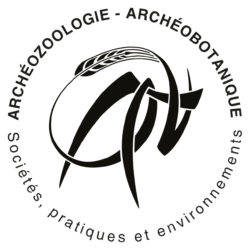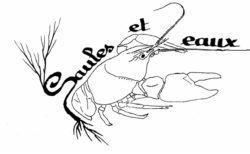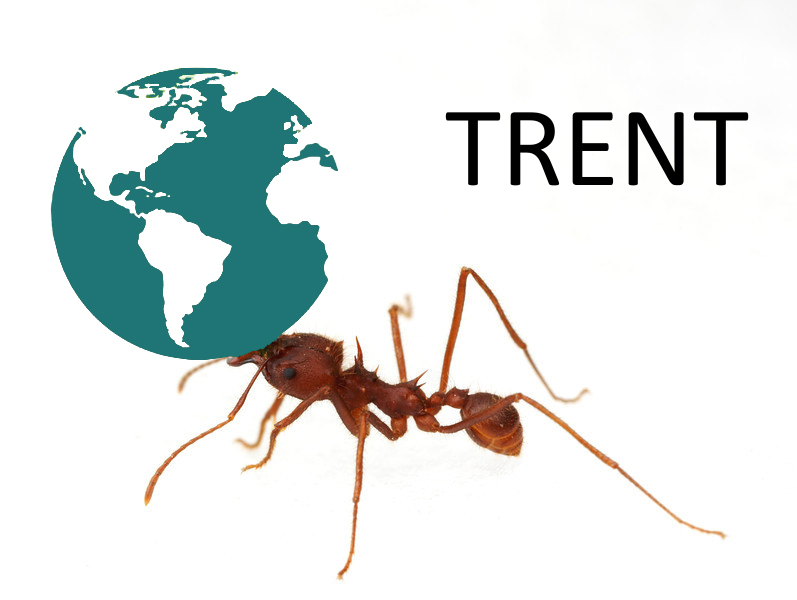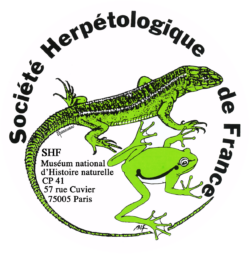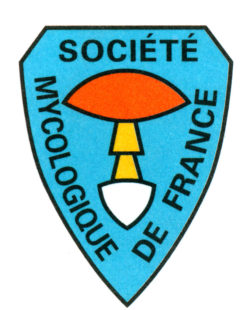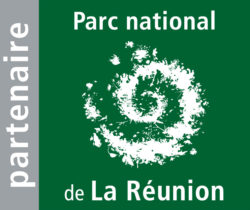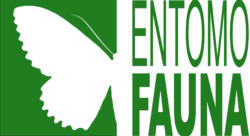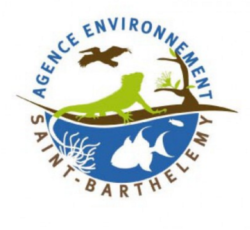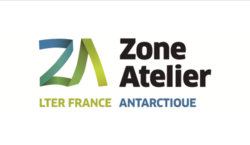Références bibliographiques relatives au groupe des insectes hyménoptères
Pour rechercher un mot clé dans la page, taper le mot dans l’outil « rechercher » de votre navigateur.
Pour télécharger le document cliquez sur le rond bleu.
Aizen, M., & al. 2011. Comparative nectar-foraging behaviors and efficiencies of an alien and a native bumble bee. Biological Invasions 13(12): 2901-2909. Lire
Allen, C. R., & al. 2017. The invasive ant, Solenopsis invicta, reduces herpetofauna richness and abundance. Biological Invasions 19(2): 713-722.![]()
Alston-Knox, C. L., & al. 2018. Modelling habitat and planning surveillance using Landsat imagery: a case study using Imported Red Fire ants. Biological Invasions 20(5): 1349-1367.![]()
Altfeld, L. & Stiling, P. 2009. Effects of aphid-tending Argentine ants, nitrogen enrichment and early-season herbivory on insects hosted by a coastal shrub. Biological Invasions 11(2): 183-191.![]()
Angulo, E., & al. 2011. Scavenging in Mediterranean ecosystems: effect of the invasive Argentine ant. Biological Invasions 13(5): 1183-1194.![]()
Alyokhin, A. & Sewell, G. 2004. Changes in A Lady Beetle Community Following the Establishment of Three Alien Species. Biological Invasions 6(4): 463-471.![]()
Arbetman, M., & al. 2013. Alien parasite hitchhikes to Patagonia on invasive bumblebee. Biological Invasions 15(3): 489-494.![]()
Arca M., Capdevielle-Dulac C., Villemant C., Mougel F., Arnold G. Silvain J.-F. 2012. Development of microsatellite markers for the yellow-legged Asian hornet, Vespa velutina, a major threat for European bees. Conservation of Genetic Resources. DOI 10.1007/s12686-011-9525-1.![]()
Arca, M., Mougel, F., Guillemaud, T., Dupas, S., Rome, Q., Perrard, A., Muller, F., Fossoud, A., Capdevielle-Dulac, C., Torres-Leguizamon, M., Chen, X., Tan, J., Jung, C., Villemant, C., Arnold, G., Silvain, J.-F. 2015. Reconstructing the invasion and the demographic history of the yellow-legged hornet, Vespa velutina, in Europe. Biological Invasions, DOI: 10.1007/s10530-015-0880-9.![]()
Ashcroft, M., & al. 2012. Combining citizen science, bioclimatic envelope models and observed habitat preferences to determine the distribution of an inconspicuous, recently detected introduced bee (Halictus smaragdulus Vachal Hymenoptera: Halictidae) in Australia. Biological Invasions 14(3): 515-527.![]()
Auger-Rozenberg M.A. & Roques A. 2012. Seed wasp invasions promoted by unregulated seed trade affect vegetal and animal biodiversity. Integrative Zoology 7: 228–246.![]()
Auger-Rozenberg M.A., Boivin T., Magnoux E., Courtin C., Roques A., Kerdelhué C., 2012. Inferences on population history of a seed chalcid wasp: invasion success despite a severe founder effect from an unexpected source population. Molecular Ecology, 21(24):6086-103.![]()
Baker, C. M., & al. 2017. Modelling tropical fire ant (Solenopsis geminata) dynamics and detection to inform an eradication project. Biological Invasions 19(10): 2959-2970.![]()
Barbet-Massin, M., & al. 2018. Can species distribution models really predict the expansion of invasive species? PLOS ONE 13(3): e0193085.![]()
Barbet-Massin, M., Rome, Q., Muller, F., Perrard, A., Villemant, C., Jiguet, F., 2013. Climate change increases the risk of invasion by the Yellow-legged hornet. Biological Conservation 157, 4–10.![]()
Beggs J., Brockerhoff E., Corley J., Kenis K., Masciocchi M., Muller F., Rome Q., Villemant C. 2011. Invasive hornets and wasps. In: Helen Roy, Remy Ware, Lori Handley-Lawson, Patrick De Clercq, Eric Wajnberg (eds.) Invasive arthropod predators and parasitoids: an ecological approach. Biocontrol 56 4, 505-526, DOI:10.1007/s10526-011-9389-z.
Berman, M., & al. 2013. Invasive ants as back-seat drivers of native ant diversity decline in New Caledonia. Biological Invasions 15(10): 2311-2331.![]()
Berman, M.,& al. 2013. Overview of the Distribution, Habitat Association and Impact of Exotic Ants on Native Ant Communities in New Caledonia. PLoS ONE 8(6): e67245.![]()
Bertelsmeier, C., Ollier, S., Avril, A., Blight, O., Jourdan, H., Courchamp, F. 2016. Colony-colony interactions among highly invasive ants. Basic and applied ecology 17(2): 106-114. doi: 10.1016/j.baae.2015.09.005.![]()
Bertelsmeier, C., Avril, A., Blight, O., Jourdan, H., Courchamp, F., 2015. Is there a discovery-dominance trade-off among highly invasive ants? Ecology and Evolution 5(13): 2673–2683. doi/10.1002/ece3.1542.![]()
Bertelsmeier, C., Avril, A., Blight, O., Confais, A., Diez, L., Jourdan, H., Orivel, J., Saint Germès, N., Courchamp, F. 2015. Different behavioural strategies among seven highly invasive ant species. Biol. Invasions 17(8): 2491-2503. doi: 10.1007/s10530-015-0892-5.![]()
Bertelsmeier, C., & al. 2013. Global warming may freeze the invasion of big-headed ants. Biological Invasions 15(7): 1561-1572.![]()
Bittner, T. D., & al. 2017. Multiple introductions of Sirex noctilio (Hymenoptera: Siricidae) in northeastern North America based on microsatellite genotypes, and implications for biological control. Biological Invasions 19(5): 1431-1447.![]()
Blight, O.,& al. 2017. Differences in behavioural traits among native and introduced colonies of an invasive ant. Biological Invasions 19(5): 1389-1398.![]()
Blight, O., & al. 2010. A new colony structure of the invasive Argentine ant (Linepithema humile) in Southern Europe. Biological Invasions 12(6): 1491-1497.![]()
Blight, O., & al. 2010. A native ant armed to limit the spread of the Argentine ant. Biological Invasions 12(11): 3785-3793.![]()
Boivin, T., & al. 2008. Differences in life history strategies between an invasive and a competing resident seed predator. Biological Invasions 10(7): 1013-1025.![]()
Boman, S., & al. 2008. Quantitative genetic approach for assessing invasiveness: geographic and genetic variation in life-history traits. Biological Invasions 10(7): 1135-1145.![]()
Bos, M., & al. 2008. The invasive Yellow Crazy Ant and the decline of forest ant diversity in Indonesian cacao agroforests. Biological Invasions 10(8): 1399-1409.![]()
Bouchard, A.-M., & al. 2008. Invasion of American native lily populations by an alien beetle. Biological Invasions 10(8): 1365-1372.![]()
Bourgogne Franche-Comté Nature. 2019. Bilan d’enquête 2019 l’Abeille résineuse géante. E-Observations, 4p. Lire
Brightwell, R. & Silverman, J. 2010. Invasive Argentine ants reduce fitness of red maple via a mutualism with an endemic coccid. Biological Invasions 12(7): 2051-2057.![]()
Buczkowski, G. & Bennett, G. 2008. Aggressive interactions between the introduced Argentine ant, Linepithema humile and the native odorous house ant, Tapinoma sessile. Biological Invasions 10(7): 1001-1011.![]()
Buczkowski, G. 2010. Extreme life history plasticity and the evolution of invasive characteristics in a native ant. Biological Invasions 12(9): 3343-3349.![]()
Caldera, E. J., & al. 2008. Putative native source of the invasive fire ant Solenopsis invicta in the USA. Biological Invasions 10(8): 1457-1479.![]()
Carpintero, S. & Reyes-López, J. 2007. The role of competitive dominance in the invasive ability of the Argentine ant (Linepithema humile). Biological Invasions 10(1): 25-35.![]()
Castro, L. & Torralba-Burrial A. 2013. First European records of an alien paper wasp: Polistes (Aphanilopterus) major Palisot de Beauvois, 1818 (Hymenoptera: Vespidae) in northern Spain. Zootaxa 3681: 89-92.![]()
Cerdá, X., & al. 2011. Ant community structure on a small Pacific island: only one native species living with the invaders. Biological Invasions 14(2): 323-339.![]()
Choi, M. B., & al. 2013. Microsatellite variation in colonizing populations of yellow-legged Asian hornet, Vespa velutina nigrithorax, in South Korea. Entomological Research 43(4): 208-214.![]()
Chrobock, T., N. Weiner,C., Werner, M., Blüthgen, N., Fischer, M., van Kleunen, M. 2013). Effects of native pollinator specialization, self-compatibility and flowering duration of European plant species on their invasiveness elsewhere. Journal of ecology 101(4): 916-923.![]()
Cooling, M. & B. D. Hoffmann. 2015. Here today, gone tomorrow: declines and local extinctions of invasive ant populations in the absence of intervention. Biological Invasions 17(12): 3351-3357.![]()
DeFisher, L. E. & D. N. Bonter 2013. Effects of invasive European fire ants (Myrmica rubra) on herring gull (Larus argentatus) reproduction. PLoS ONE 8(5): e64185.![]()
Devenish, A. J. M., & al. 2019. Invasive ants take and squander native seeds: implications for native plant communities. Biological Invasions 21(2): 451-466.![]()
DiGirolamo, L. A. & Fox, L. R. 2006. The Influence of Abiotic Factors and Temporal Variation on Local Invasion Patterns of the Argentine Ant (Linepithema humile). Biological Invasions 8(2): 125-135.![]()
Dittrich-Schröder, G., & al. 2018. Population genetic analyses of complex global insect invasions in managed landscapes: a Leptocybe invasa (Hymenoptera) case study. Biological Invasions 20(9): 2395-2420.![]()
Downing, J. L. & Liu, H. 2012. Friend or foe? Impacts of the introduced tropical oil bee Centris nitida on a threatened and specialized native mutualism in Southern Florida. Biological Invasions 14(10): 2175-2185.![]()
Errard, C., Delabie, J., Jourdan, H., Hefetz, A. 2005. Intercontinental chemical variation in the invasive ant Wasmannia auropunctata (Hymenoptera: Formicidae) a key to the invasive success of a tramp species. Naturwissenschaften 92: 319-323.![]()
Estany-Tigerström, D., & al. 2009. Does Argentine ant invasion affect prey availability for foliage-gleaning birds? Biological Invasions 12(4): 827-839.![]()
Estany-Tigerström, D., & al. 2013. Is the blue tit falling into an ecological trap in Argentine ant invaded forests? Biological Invasions 15(9): 2013-2027.![]()
Estoup A., Foucaud J., Loiseau A., Robert S., Rey O., Jourdan,H., Konghouleux, J., Orivel J., Guéry D. 2010. Ecologie et génétique évolutive d’une fourmi envahissante Wasmannia auropunctata. In : Nivet C. (ed.), McKey D. (ed.), Legris C. (ed.) Connaissance et gestion des écosystèmes tropicaux : résultats du programme de recherche « écosystèmes tropicaux » 2005-2010. Paris (FRA); Paris : ECOFOR ; MEEDDM, p. 33-45.![]()
Falcón, W., & al. 2017. Quantifying how acquired interactions with native and invasive insects influence population growth rates of a non-indigenous plant. Biological Invasions 19(3): 895-911.![]()
Foucaud, J., Rey,O., Robert, S., Crespin, L., Orivel, J., Facon, B., Loiseau, A., Jourdan, H., Kenne, M., Mbenoun Masse, P.S., Tindo, M., Vonshak, M., Estoup, A. 2013. Thermotolerance adaptation to human-modified habitats occurs in the native range of the invasive ant Wasmannia auropunctata before long-distance dispersal. Evolutionary Applications 6(4) : 721–734. doi: 10.1111/eva.12058.![]()
Foucaud, J., Orivel, J., Loiseau, A., Delabie, J. H. C., Jourdan, H., Konghouleux, D., Vonshak, M., Tindo, M., Mercier, J.-L., Fresneau, D., Mikissa, J.-B., McGlynn, T., Mikheyev, A. S., Oettler, J. Estoup, A. 2010. Worldwide invasion by the little fire ant: routes of introduction and eco-evolutionary pathways. Evolutionary Applications 3 (4): 363-374.![]()
Foucaud, J., Jourdan, H., Le Breton, J., Konghouleux, J., Loiseau, A., Estoup, A. 2006. Rare sexual reproduction events in the clonal reproduction system of introduced populations of the little fire ant. Evolution 60(8): 1646-1657.![]()
Fournier, R. E. & J. J. Turgeon. 2017. Surveillance during monitoring phase of an eradication programme against Anoplophora glabripennis (Motschulsky) guided by a spatial decision support system. Biological Invasions 19(10): 3013-3035.![]()
Fournier, D., Foucaud, J., Loiseau, A., Cross-Arteil, S., Jourdan, H., Orivel, J., Le Breton, J., Chazeau, J., Dejean, A., Keller, L., Estoup, A. 2005. – Characterisation and PCR multiplexing of polymorphic microsatellite loci for the invasive ant Wasmannia auropunctata. Molecular Ecology Notes 5: 239-242.![]()
Gaigher, R., & al. 2011. Impact of a mutualism between an invasive ant and honeydew-producing insects on a functionally important tree on a tropical island. Biological Invasions 13(8): 1717-1721.![]()
Gaigher, R., & al. 2013. Saving a tropical ecosystem from a destructive ant-scale (Pheidole megacephala, Pulvinaria urbicola) mutualism with support from a diverse natural enemy assemblage. Biological Invasions 15(9): 2115-2125.![]()
Gaigher, R. & Samways, M. J.2013. Strategic Management of an Invasive Ant-scale Mutualism Enables Recovery of a Threatened Tropical Tree Species. Biotropica 45(1): 128-134.![]()
Gardner-Gee, R. & Beggs, J. R. 2013. Invasive wasps, not birds, dominate in a temperate honeydew system. Austral Ecology 38(3): 346-354.![]()
Gasc, A., & al. 2018. Cricket calling communities as an indicator of the invasive ant Wasmannia auropunctata in an insular biodiversity hotspot. Biological Invasions 20(5): 1099-1111.![]()
Gebiola, M., & al. 2013. Did the parasitoid Pnigalio mediterraneus (Hymenoptera: Eulophidae) track the invasion of the horse chestnut leafminer? Biological Invasions 16(4): 843-857.![]()
Glenn, S. & Holway, D. 2007. Consumption of introduced prey by native predators: Argentine ants and pit-building ant lions. Biological Invasions 10(3): 273-280.![]()
Graziosi, I. & Rieske, L. K. 2013. Response of Torymus sinensis, a parasitoid of the gallforming Dryocosmus kuriphilus, to olfactory and visual cues. Biological Control 67(2): 137-142.![]()
Gifford, M. E., & al. 2017. The influence of invasive fire ants on survival, space use, and patterns of natural selection in juvenile lizards. Biological Invasions 19(5): 1461-1469.![]()
Gruber, M. A. M., & al. 2012. Population decline but increased distribution of an invasive ant genotype on a Pacific atoll. Biological Invasions 15(3): 599-612.![]()
Hammon, Malory. 2018. L’invasion de la fourmi d’Argentine (Linepithema humile) sur les îles d’Hyères : quels impacts sur l’entomofaune indigène ? rapport de Master 2. 46p.![]()
Hanna, C., & al. 2013. Colony social structure in native and invasive populations of the social wasp Vespula pensylvanica. Biological Invasions 16(2): 283-294.![]()
Harvey, J. A., & al. 2012. The effect of different dietary sugars and honey on longevity and fecundity in two hyperparasitoid wasps. Journal of Insect Physiology 58(6): 816-823.![]()
Haxaire, J., & Villemant, C. 2010. Impact sur l’entomofaune des « pièges à frelon asiatique ». Insectes. 159: 1-6.
Hernandez-Lopez A., Rougerie R. Augustin S., Lees D. C.,Tomov R., Kenis M., Cota E., Kullaj E., Hansson C., Grabenweger G., Roques A., Lopez-Vaamonde C. 2012. Host tracking or cryptic adaptation? Phylogeography of Pediobius saulius (Hymenoptera, Eulophidae), a parasitoid of the highly invasive horse-chestnut leafminer. Evolutionary Applications 5 (3) : 256-269.![]()
Hoffmann, B. D. & Parr, C. L. 2007. An invasion revisited: the African big-headed ant (Pheidole megacephala) in northern Australia. Biological Invasions 10(7): 1171-1181.![]()
Hoffmann, B. D. 2009. Ecological restoration following the local eradication of an invasive ant in northern Australia. Biological Invasions 12(4): 959-969.![]()
Huxel, G. R. 2000. The Effect of the Argentine Ant on the Threatened Valley Elderberry Longhorn Beetle. Biological Invasions 2(1): 81-85.![]()
Jourdan, H., Bonnet de Larbogne, L., Chazeau, J. 2002 – The recent introduction of the tramp ant Wasmannia auropunctata (Roger) into Vanuatu archipelago and overview of the inferred consequences. Sociobiology 40(3): 483-509.
Jourdan, H., Sadlier, R., Bauer, A., 2001 – Little fire ant invasion (Wasmannia auropunctata) as a threat to New Caledonian Lizard: Evidences from a sclerophyll forest (Hymenoptera: Formicidae). Sociobiology 38(3): 283-301.
Jourdan, H., 1997. – Threats on Pacific islands: the spread of the tramp ant Wasmannia auropunctata (Hymenoptera: Formicidae). Pacific Conservation Biology 3(1): 61-64.![]()
Jourdan, H., Bourguet, E. 2014. Suivi, cartographie d’invasion de la fourmi électrique Wasmannia auropunctata et collecte de souris Mus musculus sur l’île longue, archipel des Chesterfield. Compte-rendu de la mission réalisée grâce au concours du navire Amborella. 16-30 Novembre 2012. IMBE, IRD Noumea, Nouvelle-Calédonie: 35 pp.![]()
Jourdan H., Dumas, P. 2004. Stigmates de la globalisation dans le Pacifique : le cas de fourmi envahissante Wasmannia auropunctata. Apport de la spatialisation, à l’aide d’un SIG pour la prédiction du risque. In Espaces tropicaux et risques : du local au global. [Actes des Xéme Journées de Géographie Tropicale du comité national de géographie , Orléans, 24-26/09 2003] , David, G. (Ed.), Presses Universitaires d’Orléans & IRD : 396-408.
Kenis, M., & al. 2008. Ecological effects of invasive alien insects. Biological Invasions 11(1): 21-45.![]()
King, J. R., & al. 2008. A case study of human exacerbation of the invasive species problem: transport and establishment of polygyne fire ants in Tallahassee, Florida, USA. Biological Invasions 11(2): 373-377.![]()
Le Breton, J., Jourdan, H., Chazeau, J., Orivel, J., Dejean, A. 2005. Niche opportunity and ant invasion: the case of Wasmannia auropunctata in a New Caledonian rain forest. Journal of Tropical Ecology 21(1): 93-98.![]()
Le Breton, J., Delabie J., Chazeau, J., Dejean, A., Jourdan, H. 2004. Experimental evidence of large scale unicoloniality in the tramp ant Wasmannia auropunctata. Journal of Insect Behaviour 17(2): 263-271.![]()
Le Breton, J., Chazeau, J., Jourdan, H. 2003 – Immediate impacts of invasion by Wasmannia auropunctata (Hymenoptera: Formicidae) on native litter ant fauna in a New Caledonian rain forest. Austral Ecology 28: .204-209.![]()
LeBrun, E. G., & al. 2007. Dynamic expansion in recently introduced populations of fire ant parasitoids (Diptera: Phoridae). Biological Invasions 10(7): 989-999.![]()
Lester, P. J. & M. A. M. Gruber. 2016. Booms, busts and population collapses in invasive ants. Biological Invasions 18(11): 3091-3101.![]()
Leza, M., & al. 2018. First detection of Vespa velutina nigrithorax (Hymenoptera: Vespidae) in the Balearic Islands (Western Mediterranean): a challenging study case. Biological Invasions 20(7): 1643-1649.![]()
Lizon à l’Allemand, S. & Witte, V. 2010. A sophisticated, modular communication contributes to ecological dominance in the invasive ant Anoplolepis gracilipes. Biological Invasions 12(10): 3551-3561.![]()
Martinez, M., Germain, J.-F., Streito, J.-L. 2014. Insectes ravageurs invasifs : les sept espèces notables. Phytoma, 677 (23) 1-3.![]()
Masciocchi, M., & al. 2009. Competition for food between the exotic wasp Vespula germanica and the native ant assemblage of NW Patagonia: evidence of biotic resistance? Biological Invasions 12(3): 625-631.![]()
Miravete, V., & al. 2013. How many and which ant species are being accidentally moved around the world? Biol Lett 9(5).![]()
Monceau, K., & al. 2013. Native Prey and Invasive Predator Patterns of Foraging Activity: The Case of the Yellow-Legged Hornet Predation at European Honeybee Hives. PLoS ONE 8(6): e66492.![]()
Mondor, E. B. & Addicott, J. F. 2006. Do exaptations facilitate mutualistic associations between invasive and native species? Biological Invasions 9(6): 623-628.![]()
Monzó, C., & al. 2012. Pre-adaptive shift of a native predator (Araneae, Zodariidae) to an abundant invasive ant species (Hymenoptera, Formicidae). Biological Invasions 15(1): 89-100.![]()
Nukatsuka, Y. & Yokoyama, J. 2009. Environmental factors and land uses related to the naturalization of Bombus terrestris in Hokkaido, northern Japan. Biological Invasions 12(4): 795-804.![]()
O’Loughlin, L. S. & Green, P. T. 2015. Invader–invader mutualism influences land snail community composition and alters invasion success of alien species in tropical rainforest. Biological Invasions 17(9): 2659-2674.![]()
Orivel, J., Grangier, J., Foucaud, J., Le Breton, J., Andrès, F.X., Jourdan, H., Delabie, J.H.C., Fournier, D., Cerdan, P., Facon, B., Estoup, A., Dejean, A. 2009. Ecologically heterogeneous populations of the invasive ant Wasmannia auropunctata within its native and introduced ranges. Ecological Entomology 34: 512-523.![]()
Peck, R. W., & al. 2008. Alien dominance of the parasitoid wasp community along an elevation gradient on Hawai’i Island. Biological Invasions 10(8): 1441-1455.![]()
Perrard A., Muller F., Rome Q. & Villemant C., 2011. Observations sur le Frelon asiatique à pattes jaunes, Vespa velutina Lepeletier, 1836 (Hymenoptera: Vespidae). Bulletin de la Société Entomologique de France, 116(2): 159-164.![]()
Perrard, A., Haxaire, J., Rortais, A. & Villemant, C. 2009. Observations on the colony activity of the Asian hornet Vespa velutina Lepeletier 1836 (Hymenoptera: Vespidae: Vespinae) in France. Annales de la société entomologique de France, 2009, 119-127.![]()
Phillips, C. B., & al. 2018. Utility of the CLIMEX ‘match climates regional’ algorithm for pest risk analysis: an evaluation with non-native ants in New Zealand. Biological Invasions 20(3): 777-791.![]()
Plentovich, S., & al. 2018. Yellow crazy ants (Anoplolepis gracilipes) reduce numbers and impede development of a burrow-nesting seabird. Biological Invasions 20(1): 77-86.![]()
Plentovich, S., & al. 2008. Detrimental effects of two widespread invasive ant species on weight and survival of colonial nesting seabirds in the Hawaiian Islands. Biological Invasions 11(2): 289-298.![]()
Portman, Z. M., et al. 2018. Local extinction of a rare plant pollinator in Southern Utah (USA) associated with invasion by Africanized honey bees. Biological Invasions 20(3): 593-606.![]()
Rasplus, J.-Y., Villemant, C., Rosa Paiva, M., Delvare, G., Roques, A. 2010. Hymenoptera. BioRisk. 4(2): 669-776.![]()
Robbins, T. R., & al. 2012. Native predator eats invasive toxic prey: evidence for increased incidence of consumption rather than aversion-learning. Biological Invasions 15(2): 407-415.![]()
Rodriguez-Cabal, M. A., & al. 2011. Disruption of ant-seed dispersal mutualisms by the invasive Asian needle ant (Pachycondyla chinensis). Biological Invasions 14(3): 557-565.![]()
Roura-Pascual, N., & al. 2008. Consensual predictions of potential distributional areas for invasive species: a case study of Argentine ants in the Iberian Peninsula. Biological Invasions 11(4): 1017-1031.![]()
Rome, Q., Dambrine, L., Onate, C., Muller, F., Villemant, C., García Pérez, A.L., Maia, M., Carvalho Esteves, P., Bruneau, E. 2013. Spread of the invasive hornet Vespa velutina Lepeletier, 1836, in Europe in 2012 (Hym., Vespidae). Bulletin de la Société entomologique de France 118, 21–22.![]()
Rome, Q., Muller, F., Gargominy, O. & Villemant, C. 2009a. Bilan 2008 de l’invasion de Vespa velutina Lepeletier en France (Hymenoptera, Vespidae). Bulletin de la Société entomologique de France, 114, 297-302.![]()
Rome, Q., Muller, F., Villemant, C., 2012. Expansion 2011 de Vespa velutina Lepeletier (Hymenoptera, Vespidae) en Europe. Bulletin de la Société Entomologique de France 117, 114.![]()
Rome, Q., Muller, F.J., Touret-Alby, A., Darrouzet, E., Perrard, A., Villemant, C. 2015. Caste differentiation and seasonal changes in Vespa velutina (Hym.: Vespidae) colonies in its introduced range. Journal of Applied Entomology, DOI: 10.1111/jen.12210.![]()
Rome, Q., Perrard, A., Muller, F., Villemant, C. 2011. Monitoring and control modalities of a honeybee predator, the yellow-legged hornet Vespa velutina nigrithorax (Hymenoptera: Vespidae). Aliens: The Invasive Species Bulletin, 31: 7-15.![]()
Rome, Q., Villemant, C., 2016. Le Frelon asiatique Vespa velutina [WWW Document]. Inventaire National du Patrimoine Naturel – Muséum national d’Histoire naturelle [Ed]. URL http://frelonasiatique.mnhn.fr.![]()
Rome, Q., Villemant, C., 2016. Invasive species: Bee-hawking hornet already in line of fire. Nature 534, 37–37. doi:10.1038/534037c.![]()
Rortais A, Villemant C, Gargominy O, Rome Q, Haxaire J, Papachristoforou A, Arnold G. 2010. A new enemy of honeybees in Europe: the Asian hornet Vespa velutina. In Atlas of Biodiversity Risks – from Europe to the globe, from stories to maps. Settele J. et al. (eds.). Pensoft, Sofia & Moscow, 7.![]()
Santos, S. G. M., & al. 2012. « Invasive Africanized honeybees change the structure of native pollination networks in Brazil. Biological Invasions 14(11): 2369-2378.![]()
Sinu, P. A., & al. 2017. Invasive ant (Anoplolepis gracilipes) disrupts pollination in pumpkin. Biological Invasions 19(9): 2599-2607.![]()
Shik, J. Z. & J. Silverman. 2012. Towards a nutritional ecology of invasive establishment: aphid mutualists provide better fuel for incipient Argentine ant colonies than insect prey. Biological Invasions 15(4): 829-836.![]()
Sorvari, J., & al. 2014. Survival of transplanted nests of the red wood ant Formica aquilonia (Hymenoptera: Formicidae): The effects of intraspecific competition and forest clear-cutting. Insect Science 21(4): 486-492.![]()
Spicer Rice, E. & Silverman, J. 2013. Submissive behaviour and habituation facilitate entry into habitat occupied by an invasive ant. Animal Behaviour 86(3): 497-506.![]()
Stuhler, J. D. & J. L. Orrock. 2016. Historical land use and present-day canopy thinning differentially affect the distribution and abundance of invasive and native ant species. Biological Invasions 18(7): 1813-1825.![]()
Suarez, A. V., & al. 1999. Behavioral and Genetic Differentiation Between Native and Introduced Populations of the Argentine Ant. Biological Invasions 1(1): 43-53.![]()
Schwartz, C., Villemant, C., Rome, Q., Muller, F. 2012. Vespa Velutina (frelon Asiatique) : Un Nouvel Hyménoptère En France. Revue Française d’Allergologie 52, no. 5 : 397–401.![]()
Tartally, A., & al. 2016. Collapse of the invasive garden ant, Lasius neglectus, populations in four European countries. Biological Invasions 18(11): 3127-3131.![]()
Trotter, R. T. & Hull-Sanders, H. M. 2015. Quantifying Dispersal of the Asian longhorned beetle (Anoplophora glabripennis, Coleoptera) with incomplete data and behavioral knowledge. Biological Invasions 17(12): 3359-3369.![]()
Villemant C., 2008. Apis cerana se défend contre Vespa velutina : observations dans le massif forestier du Bi Doup, Vietnam. Bulletin de la Société Entomologique de France, 113 (3): 312.![]()
Villemant, C., Barbet-Massin, M., Perrard, A., Muller, F., Gargominy, O., Jiguet, F., Rome, Q. 2011. Predicting the invasion risk by the alien bee-hawking Yellow-legged hornet Vespa velutina nigrithorax across Europe and other continents with niche models, Biological Conservation, 144: 2142-2150.![]()
Villemant, C., Haxaire, J., Streito, J.-C. 2006. Premier bilan de l’invasion de Vespa velutina Lepeletier en France (Hymenoptera, Vespidae). Bulletin de la Société Entomologique de France, 111, 535-538.![]()
Villemant, C., Muller, F., Rome, Q., Perrard, A., Barbet-Massin, M., Jiguet, F. 2014. Estimating the Potential Range Expansion and Environmental Impact of the Invasive Bee-Hawking Hornet, Vespa velutina nigrithorax. In Silico Bees. James Devillers, Boca Raton, FL., USA: 269‑287.![]()
Villemant, C., Zuccon, D., Rome, Q., Muller, F., Poinar Jr, G.O., Justine, J.-L. 2015. Can parasites halt the invader? Mermithid nematodes parasitizing the yellow-legged Asian hornet in France. PeerJ 3, e947. doi:10.7717/peerj.947.![]()
Vonshak, M., & al. 2011. Interspecific displacement mechanisms by the invasive little fire ant Wasmannia auropunctata. Biological Invasions 14(4): 851-861.![]()
Warren, R. J., & al. 2015. Forest invader replaces predation but not dispersal services by a keystone species. Biological Invasions 17(11): 3153-3162.![]()
Wauters, N., & al. 2018. Introduction history and genetic diversity of the invasive ant Solenopsis geminata in the Galápagos Islands. Biological Invasions 20(11): 3207-3226.![]()










